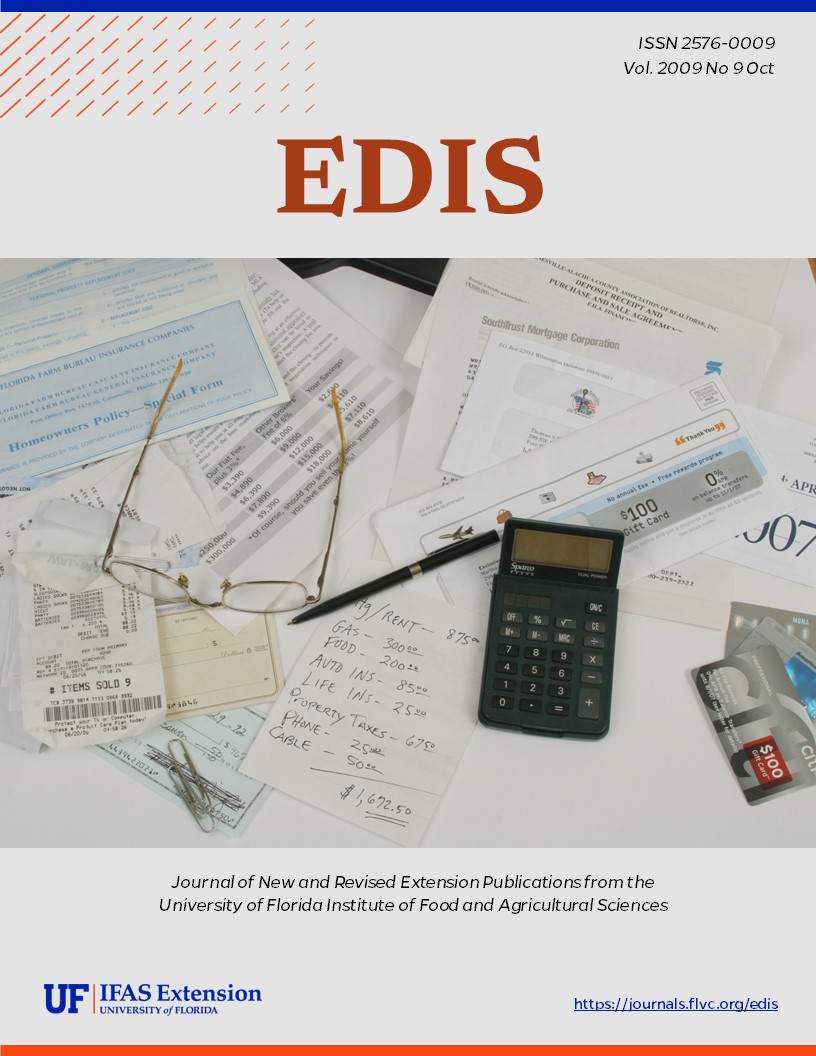Abstract
WEC-264, an 11-page illustrated fact sheet by Grant C. Sizemore, Martin B. Main, and Elise V. Pearlstine, provides an overview of some of the most majestic of Florida's birds — taxonomy and status, cranes and flamingos, identification, feeding behavior, diet, breeding, movements, and conservation. Includes references. Published by the UF Department of Wildlife Ecology and Conservation, July 2009.
References
Curry-Lindahl K. 1978. Conservation and management problems of wading birds and their habitats: a global overview. Pages 83-97 in A. Sprunt, J.C. Ogden, and S.Winckler (eds.), Wading Birds. Research Report No. 7. National Audubon Society. New York, NY.
Custer T.W. and Osborn R.G. 1978. Feeding habitat use by colonially-breeding herons, egrets, and ibises in North Carolina. The Auk 95: 733-743.
Florida Fish and Wildlife Conservation Commission. 2008. Florida's endangered species, threatened species, and species of special concern. http://myfwc.com/docs/WildlifeHabitats/Threatened_Endangered_Species.pdf.
Frederick P.C. and Collopy M.W. 1989. The role of predation in determining reproductive success of colonially nesting wading birds in the Florida Everglades. The Condor 91(4): 860-867. https://doi.org/10.2307/1368070
Jenni D.A. 1969. A study of the ecology of four species of herons during the breeding season at Lake Alice, Alachua County, Florida. Ecological Monographs 39(3): 245-270. https://doi.org/10.2307/1948546
Kale H.W. and Maehr D.S. 2005. Florida's birds: a handbook and reference. Sarasota, Pineapple Press.
Kushlan J.A. 1977. The significance of plumage colour in the formation of feeding aggregations of ciconiiforms. Ibis 119(3): 361-364. https://doi.org/10.1111/j.1474-919X.1977.tb08256.x
Kushlan J.A. 1978. Feeding ecology of wading birds. Pages 249-297 in Wading Birds (Sprunt I.V., Ogden J.C. and Winckler S, eds.) National Audobon Society Research Report No. 7, New York.
Kushlan J.A. 1981. Resource use strategies of wading birds. Wilson Bulletin 93(2): 145-163.
Kushlan J.A. 1993. Colonial waterbirds as bioindicators of environmental change (review). Colonial Waterbirds 16(2): 223-251. https://doi.org/10.2307/1521444
Kushlan J.A. and Hancock J.A. 2005. The herons. New York, Oxford University Press.
Main M.B. and Vavrina C.S. 2001. Wading birds and agriculture in southwest Florida. University of Florida Cooperative Extension Service Fact Sheet WEC 143. 3 pp. University of Florida, UF/IFAS EDIS Database, http://edis.ifas.ufl.edu/UW139.
Ogden J.C. 1994. A comparison of wading bird nesting colony dynamics (1931-1946 and 1974-1989) as an indication of ecosystem conditions in the southern Everglades. Pages 533-570 in S.M. Davis and J.C. Ogden (eds.), Everglades: The Ecosystem and Its Restoration, St. Lucie Press, Delray Beach, FL.
Ogden J.C., Kushlan J.A., and Tilmant J.T. 1978. The food habits and nesting success of Wood Storks in Everglades National Park in 1974. Natural Resources Report No. 16. U.S. Department of the Interior, National Park Service, Washington, D.C.
Powell G.V.N. and Powell A.H. 1986. Reproduction by Great White Herons Ardea herodias in Florida Bay as an indicator of habitat quality. Biological Conservation 36: 101-113. https://doi.org/10.1016/0006-3207(86)90001-7
Recher H.F. and Recher J.A. 1969. Comparative foraging efficiency of adult and immature Little Blue Herons (Florida Caerulea). Animal Behavior 17: 320-322. https://doi.org/10.1016/0003-3472(69)90017-7
Robertson W.B. and Kushlan J.A. 1974. The southern Florida avifauna. Miami Geological Soc. Mem. 2: 414-452.

